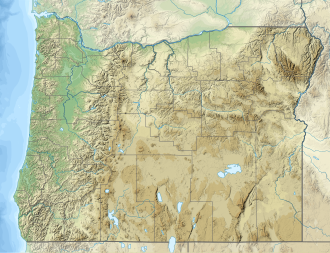| Black Canyon Wilderness | |
|---|---|
 View into the canyon near the Coffeepot Trailhead | |
| Location | Grant / Wheeler counties, Oregon, United States |
| Nearest city | Dayville, Oregon |
| Coordinates | 44°20′13″N119°39′15″W / 44.33694°N 119.65417°W |
| Area | 13,400 acres (5,423 ha) |
| Established | 1984 |
| Governing body | United States Forest Service |
The Black Canyon Wilderness of Oregon is a wilderness area in the Ochoco National Forest. It is within the drainage basin of the South Fork John Day River. It lies in Grant and Wheeler counties in Oregon. The nearest city is Paulina, in Crook County. [1] It was established in 1984 and encompasses 13,400 acres (5,423 ha).

